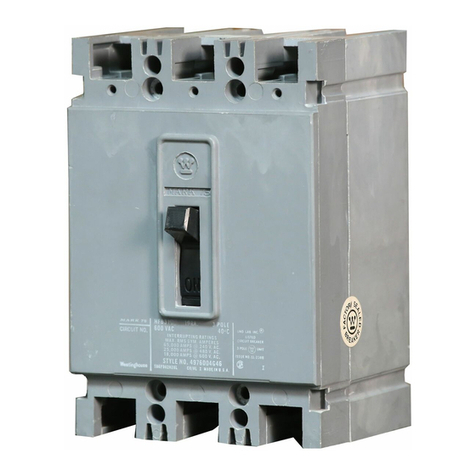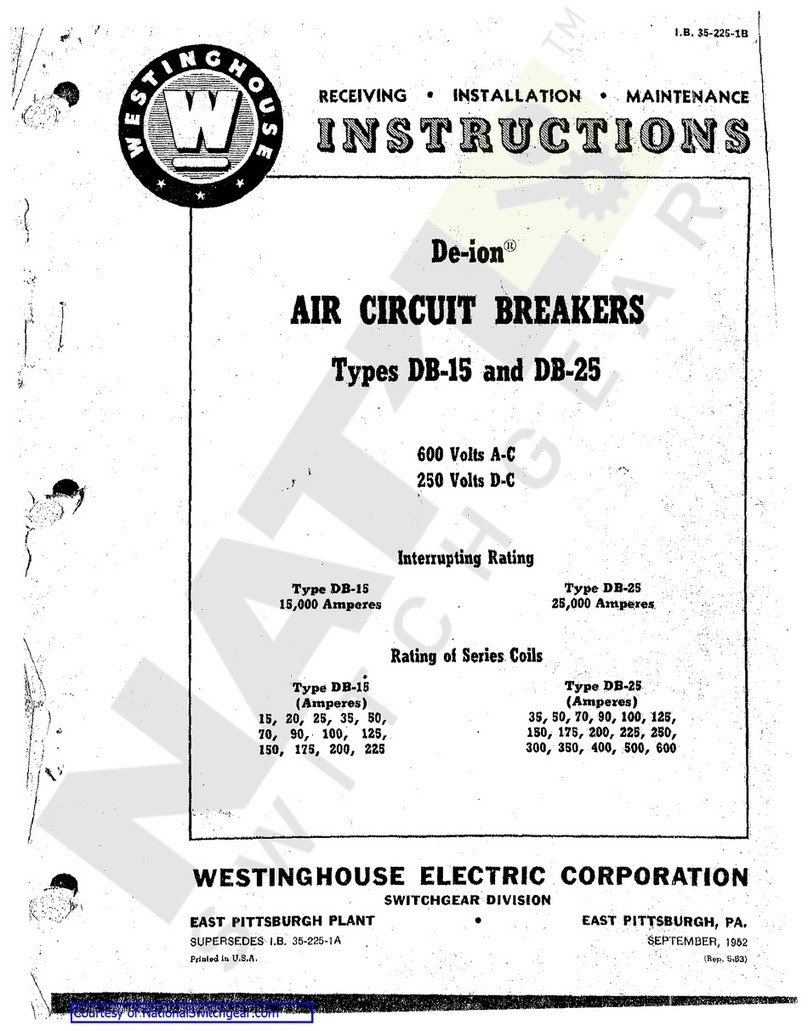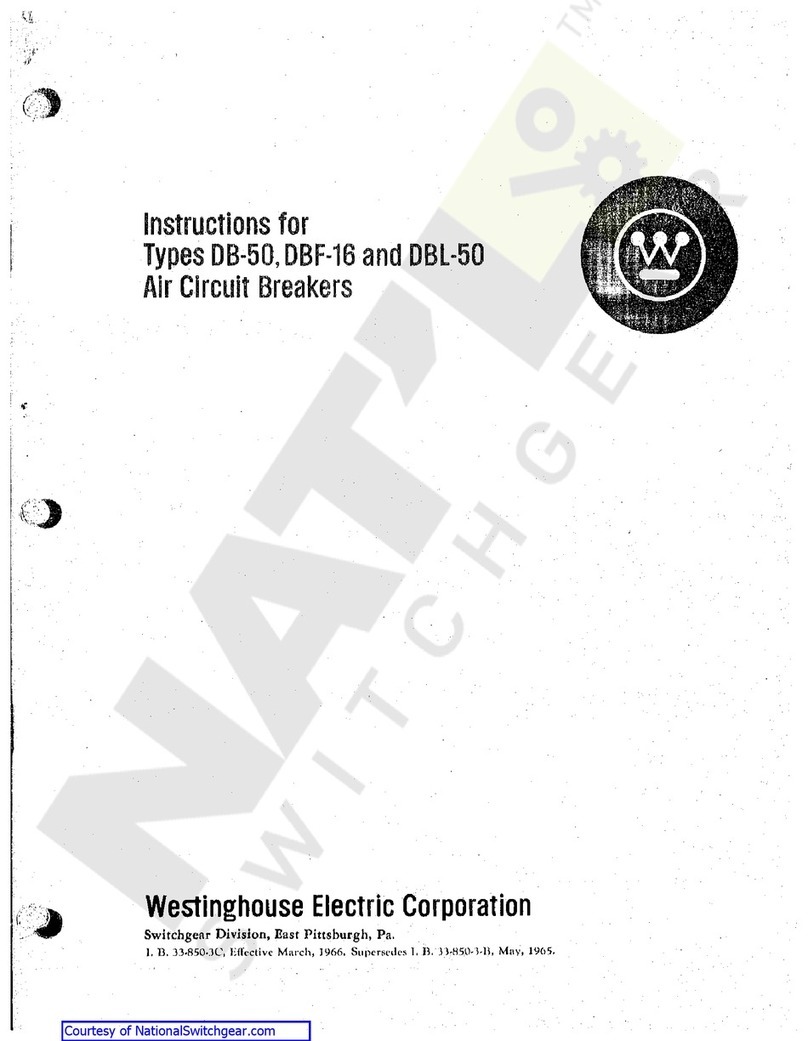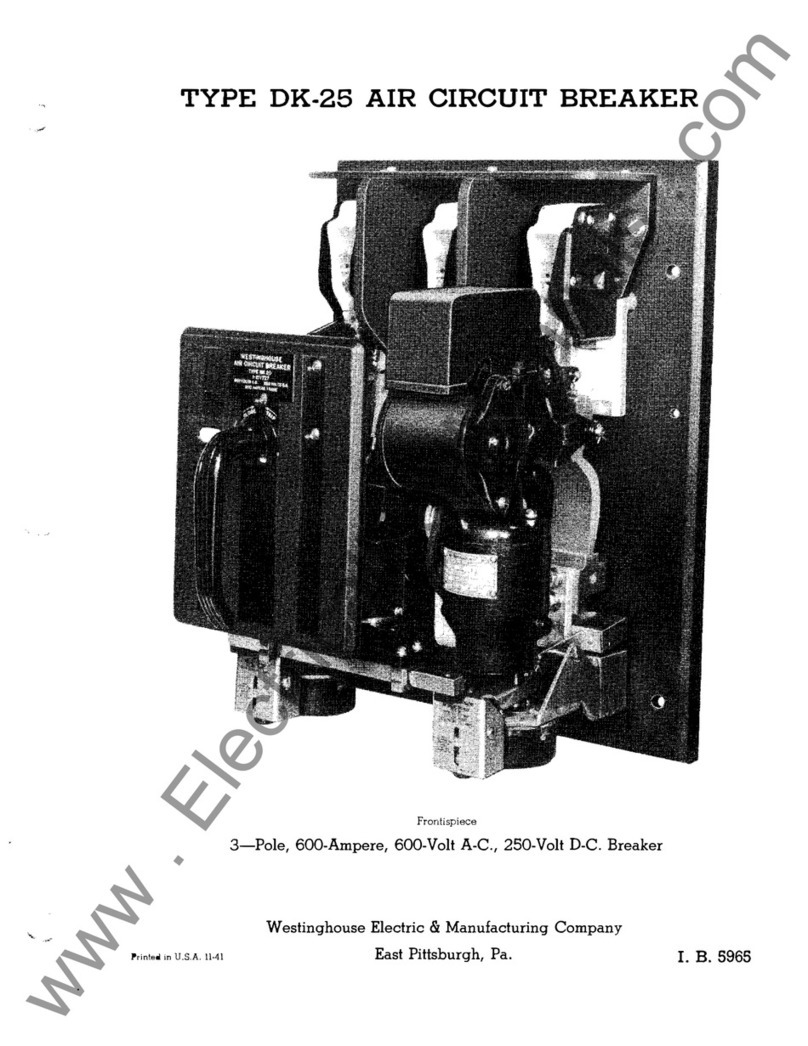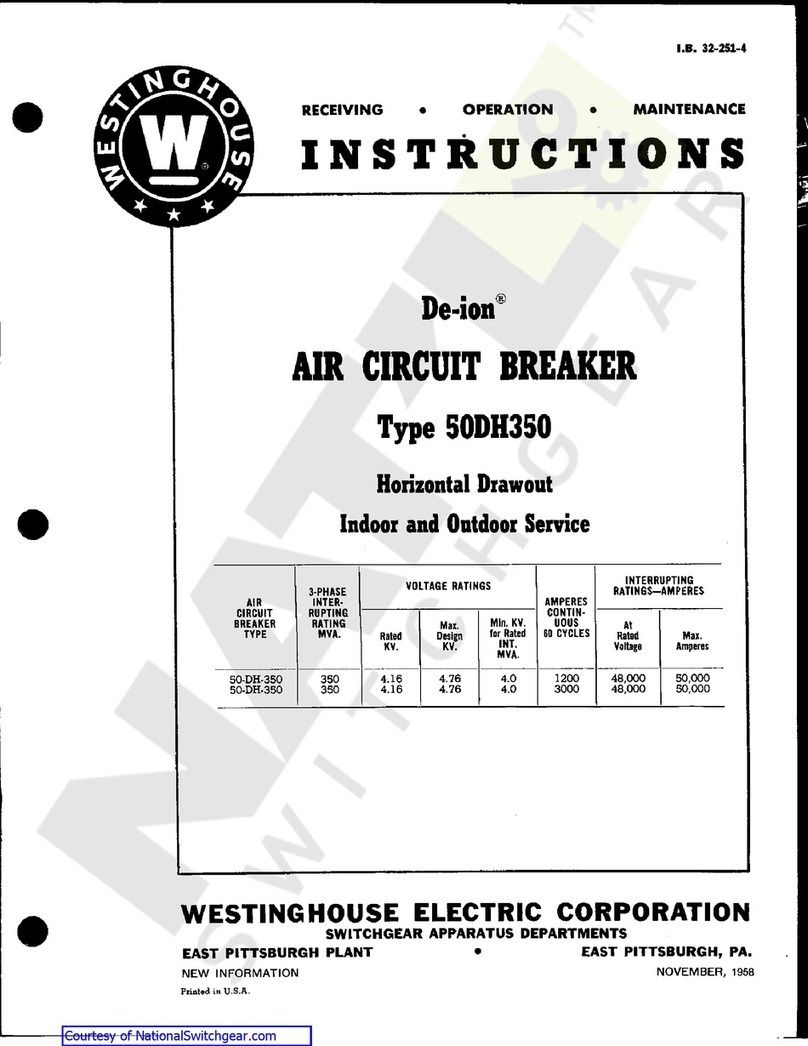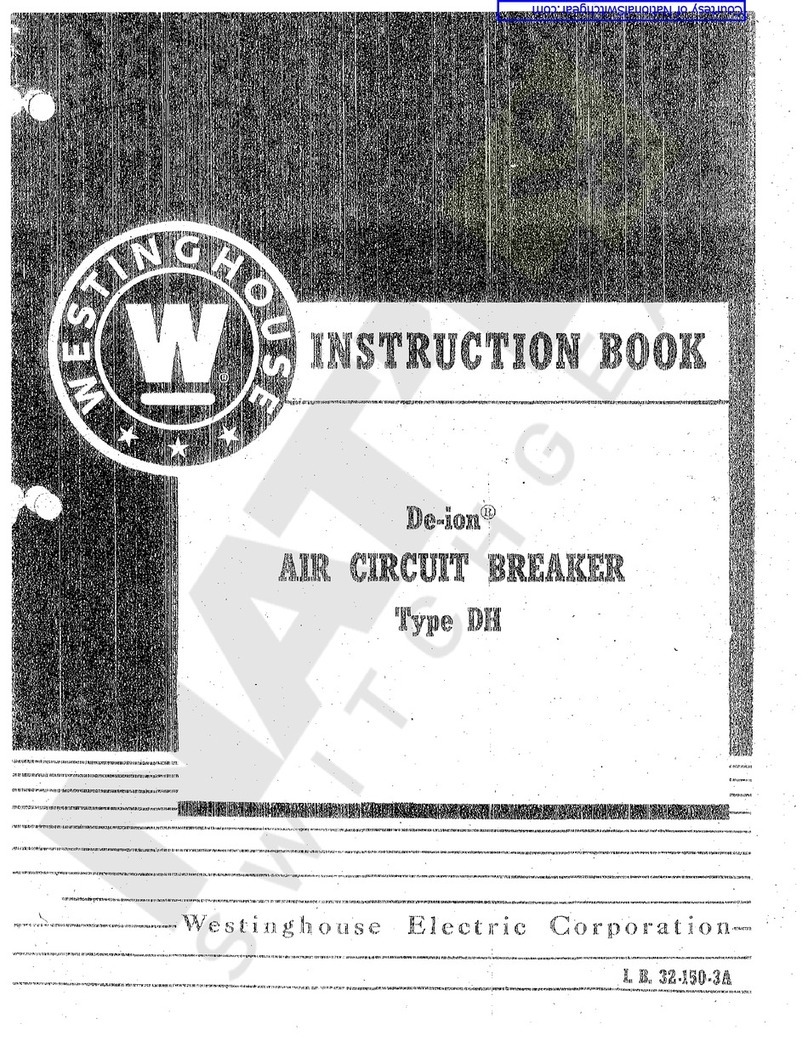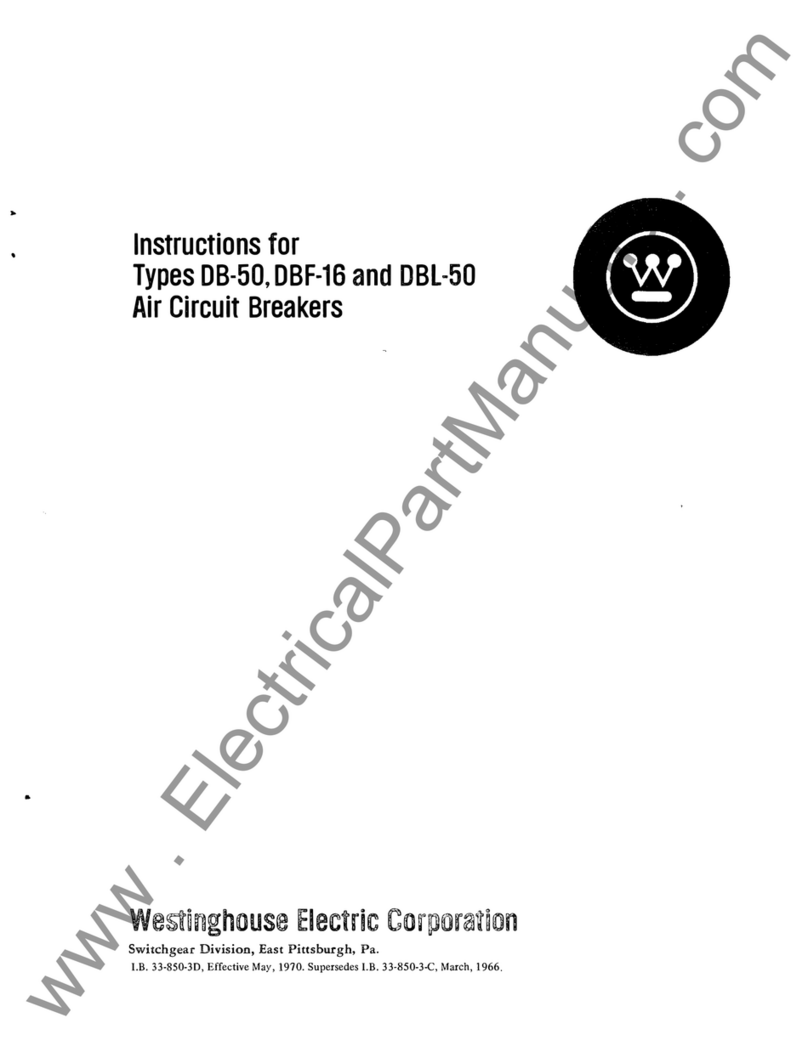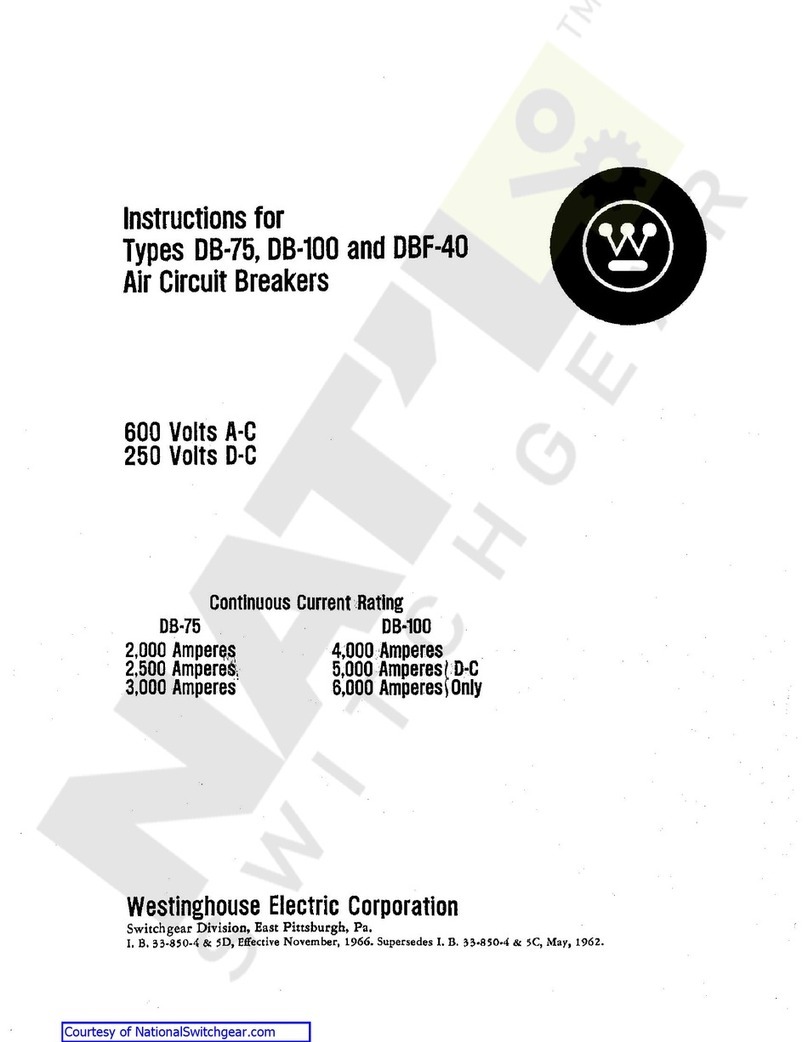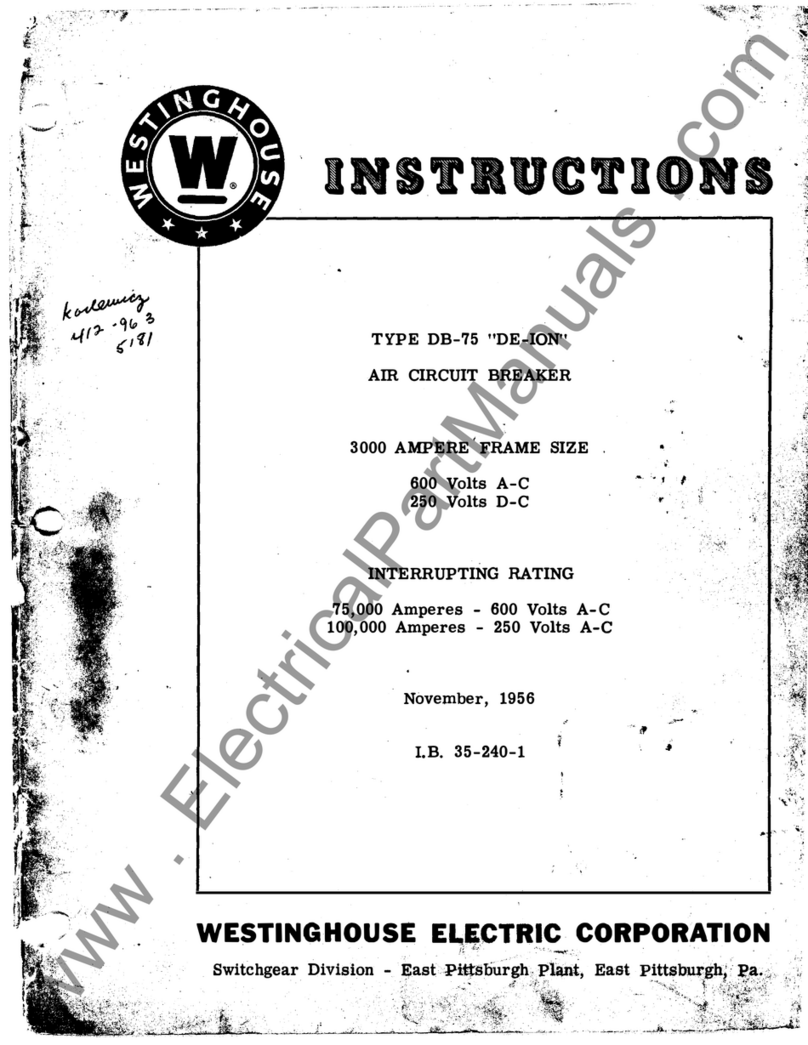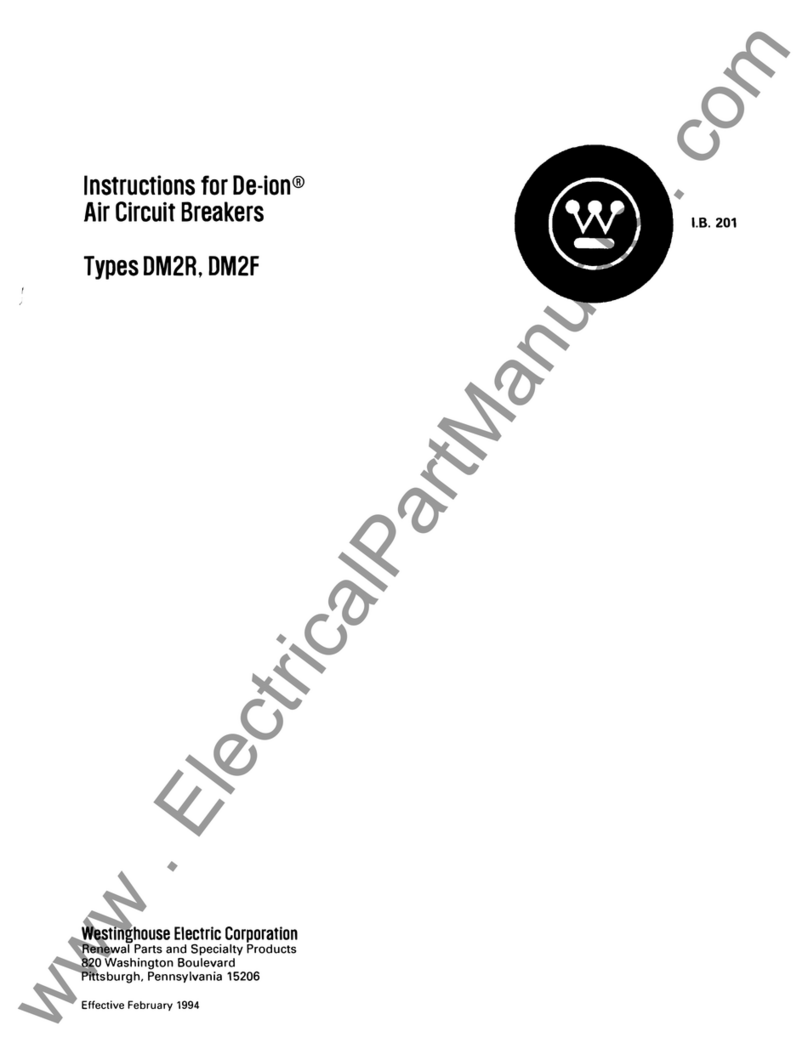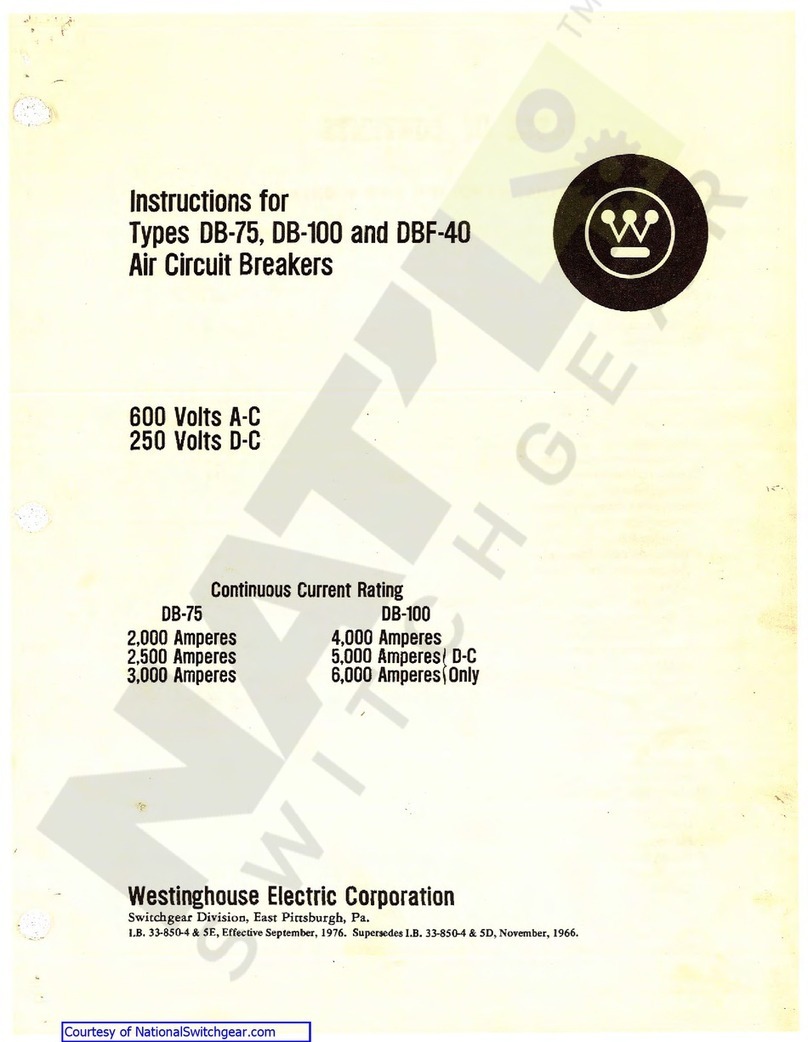
2
TABLE OF CONTENTS
Page
1.0 INTRODUCTlON. . . . . . . . . . . . . . . . . . . . . . . . . . . . . . . . . . . . . . . . . . . . . . . . . . . 4
2.0 RECOMMENDED SAFE PRACTICES . . . . . . . . . . . . . . . . . . . . . . . . . . . . . . . . . . . . . 5
3.0 RECEIVING, HANDLING AND STORAGE . . . . . . . . . . . . . . . . . . . . . . . . . . . . . . . . . 6
3.
l RECEIVING . . . . . . . . . . . . . . . . . . . . . . . . . . . . . . • . . . . . . . . . . . . . . . . . . . 6
3.2 HANDLING . . . . . . . . . . . . . . . . . . . . . • . . . . . . . . . . . . . . . . . . . . . . . . . . . . 7
3.3 STORAGE . . . . . . . . . . . . . . . . . . . . . . . . . . . . . . . . . . . . . . . . . . . . . . . . . . . 7
4.0 INSTALLATION . . . . . . . . . . . . . . . . . . . . . . . . . . . . . . . . . . . . . . . . . . . . . . . . . . . 9
4.1 INITIAL BREAKER AND COMPARTMENT
PREPARATION.................
9
4.2
MANUAL BREAKER OPERATION . . . . . . . . . . . . . . . . . . . . . . . . . . . . . . .
10
4.3
VACUUM
INTERRUPTER INTEGRITY CHECK. . . . . . . . . . . . . . . . . . . . . . . . . .
11
4.4 CONTACT WEAR GAP CHECK . . . . . . . . . . . . . . . . . . . . . . . . . . . . . . . • . . . . .
11
4.5 PRIMARY CIRCUIT RESISTANCE
CHECK........
. . . . . . . . . . . . . . . . . . . . .
11
4.6
ELECTRICAL OPERATION CHECK. . . . . . . . . . . . . . . . . . . . . . . . . . . . . . . • • .
11
4.7 BREAKER/COMPARTMENT INTERFACE C
HE
CK........................
11
5.0 DESCRIPTION AND OPERATION . . . . . . . . . . . . . • . . . . . . • . . . . . . . . . . . . . . . . . .
13
5.1 INTERRUPTER ASSEMBLY . . . . . . . . . . . . . . . . . . . . . . . . . . . . . . . . . . . . . . . 13
5.1.1 Vacuum
Interrupter.
. . . . . . . . . . . . . . . . . . . . . . . . . . . . . . . . . . . . . . . 13
5.1.2 Contact
Wear
Gap Indication . . . . . . . . . . . . . . . . . . . . . . . . . . . . . . . . . . 13
5.2 MECllANISM GENERAL . . . . . . . . . . . . . . . . . . . . . . . . . . . . . . . . . . . . . . . . . 14
5.2.1 Operation
of
Stored Energy Mechanism . . . . . . . . . . . . . . . . . . . . . . . . . . . 14
5.2.2 Interlocks. . . . . . . . . . . . . . . . . . . . . . . . . . . . . . . . . . . . . . . . . . . . 18
5.2.2.l
Breaker Compartment Code Plates. . . . . . . . . . . . . . . . . . . . . . . . 18
5.2.2.2 Anti-Close Interlock . . . . . . . . . . . . . . . . . . . . . . . . . . . . . . . . 18
5.2.2.3 Floor Tripping and Spring Release Interlocks. . . . . . . . . . . . . . . . . 18
5.2.2.4 Levering Interlock . . . . . . . . . . . . . . . . . . . . . . . . . . . . . . 18
5.2.2
.5
Interphase Barrier Interlock . . . . . . . . . . . . . . . . . . . . . . . . . . . . 18
5.2.3 Control Schemes . . . . . . . . . . . . . . . . . . . . . . . . . . . . . . . . . . . . . . . . . . 18
5.2.4 Undervoltage Trip Device . . . . . . . . . . . . . . . . . . . . . . . . . . . . . . . . . . . . 19
5.2.6 Secondary Disconnect.. . . . . . . . . . . . . . . . . . . . . . . . . . . . . . . . . . . . . .
21
5.2.7 Ground Contact . . . . . . . . . . . . . . . . . . . . . . . . . . . . . . . . . . . . . . . . . . 21
5.2.8
MOC
and TOC Switch Operators . . . . . . . . . . . . . . . . . . . . . . . . . . . . . . . 21
5
.3
INTERPHASE BARRIER . . . . . . . . . . . . . . . . . . . . . . . . . . . . . . . . . . . . . • . . . 22
5.4 LEVERING DEVICE . . . . . . . . . . . . . . . . . . . . . . . . . . . . . . . . . . . . . . . . . . . .
22
l.B. 32-254-18
Courtesy of NationalSwitchgear.com

